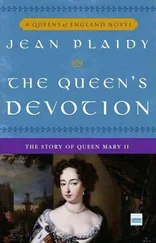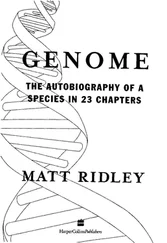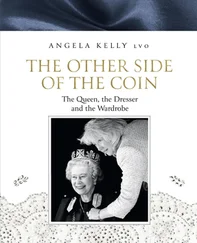The Queen - Matt Ridley
Здесь есть возможность читать онлайн «The Queen - Matt Ridley» весь текст электронной книги совершенно бесплатно (целиком полную версию без сокращений). В некоторых случаях можно слушать аудио, скачать через торрент в формате fb2 и присутствует краткое содержание. Жанр: Старинная литература, на английском языке. Описание произведения, (предисловие) а так же отзывы посетителей доступны на портале библиотеки ЛибКат.
- Название:Matt Ridley
- Автор:
- Жанр:
- Год:неизвестен
- ISBN:нет данных
- Рейтинг книги:4 / 5. Голосов: 1
-
Избранное:Добавить в избранное
- Отзывы:
-
Ваша оценка:
- 80
- 1
- 2
- 3
- 4
- 5
Matt Ridley: краткое содержание, описание и аннотация
Предлагаем к чтению аннотацию, описание, краткое содержание или предисловие (зависит от того, что написал сам автор книги «Matt Ridley»). Если вы не нашли необходимую информацию о книге — напишите в комментариях, мы постараемся отыскать её.
Matt Ridley — читать онлайн бесплатно полную книгу (весь текст) целиком
Ниже представлен текст книги, разбитый по страницам. Система сохранения места последней прочитанной страницы, позволяет с удобством читать онлайн бесплатно книгу «Matt Ridley», без необходимости каждый раз заново искать на чём Вы остановились. Поставьте закладку, и сможете в любой момент перейти на страницу, на которой закончили чтение.
Интервал:
Закладка:
The second reason is more mundane. Proving that Fisher 's runaway selection could happen and the ornament get bigger with ever-increasing speed does not prove that it does happen: Computers are not the real world: Nothing could satisfy the naturalists but an experiment, one demonstrating that the sexiness of sons drove the evolution of an ornament:
Such an experiment has never been devised, but those, like me, with a bias toward the Fisherians find several lines of argument fairly persuasive: Look around the world and what do you see? You see that the ornaments we are discussing are nothing if not arbitrary: Peacocks have eyes in their train; sage grouse have inflatable air sacs and pointed tails; nightingales have melodies of great variety and no particular pattern; birds of paradise grow bizarre feathers like pennants; bower birds collect blue objects. It is a cacophony of caprice and color: Surely if sexually selected ornaments told a tale of their owner's vigor, they would not be so utterly random.
::: 146 :::
The Red Queen
One other piece of evidence seems to weigh in the balance on the side of Fisher—the phenomenon of copying. If you watch a lek carefully, you see that the females often do not make up their own minds individually; they follow one another. Sage grouse hens are more likely to mate with a cock who has just mated with another hen. In black grouse, which also lek, the cocks tend to mate several times in a row if at all. A stuffed female black grouse (known in this species as a greyhen) placed in a male 's territory tends to draw other females to that territory—though not necessarily causing them to mate. DeIn guppy fish, females that have been allowed to see two males, one of which is already courting a female, subsequently prefer that male to the other even if the female that was being courted is no longer present."
Such copying is just what you would expect if Fisher was right because it is fashion-following for its own sake. It hardly matters whether the male chosen is the "best" male; what counts is that he is the most fashionable, as his sons will be. If the Good-geners are right, females should not be so influenced by each other 's views. There is even a hint that peahens try to prevent one another from copying, which would also make sense to a follower of Fisher.'° If the goal is to have the sexiest son in the next generation, then one way of doing that is to mate with the sexiest male; a second way is to prevent other females from mating with the sexiest male.
ORNAMENTAL HANDICAPS
If females choose males for the sexiness of their future sons, why shouldn 't they go for other genetic qualities, too? The Good-geners think that beauty has a purpose. Peahens choose genetically superior males in order to have sons and daughters who are equipped to survive as well as equipped to attract mates.
The Good-geners can marshal as much experimental support as the Fisherians. Fruit flies given a free choice of mate produce young that prove tougher in competition with the young of THE PEACOCKS TALE
::: 147:::
those not allowed to choose." Female sage grouse, black grouse, great snipe, fallow deer, and widow birds all seem to prefer the males on their leks that display most vigorously. 32 If a stuffed greyhen is put on the boundary between two blackcocks ' dancing grounds, the two males fight over the right to monopolistic necrophilia. The winner is usually the male who is most attractive to females, and he is also more likely to survive the next six months than the other male. This seems to imply that attracting females is not the only thing he is good at; he is also good at surviving." The brighter red a male house finch is, the more popular he is with the females; but he is also a better father—he provides more food for the babies—and will live longer because he is genetically more disease-resistant: By choosing the reddest male on offer, females are therefore getting superior survival genes as well as attractiveness genes.34
It is hardly surprising to find that the males best at seduction tend to be the best at other things as well; it does not prove that females are seeking good genes for their offspring. They might be avoiding feeble males lest they catch a virus from them: Nor do such observations damage the idea that the most important thing a sexy male can pass on to his sons is his sexiness—the Fisher idea.
They merely suggest that he can also pass on other attributes.
Consider, though, the case of Archbold 's bowerbird, which lives in New Guinea. As in other bowerbirds, the male builds an elaborate bower of twigs and ferns and therein tries to seduce females: The female inspects the bower and mates with the male if she likes the workmanship and the decorations, which are usually objects of one unusual color. What is peculiar about Archbold 's bowerbird is that the best decorations consist of feathers from one particular kind of bird of paradise, known as the King of Saxony.
These feathers, which are several times longer than the original owner 's body and stem from just above his eye, are like a car 's antenna sporting dozens of square blue pennants. Because they are molted once a year, do not grow until the bird of paradise is four years old, and are much in demand among local tribesmen, the plumes must be very hard for the bowerbird to acquire: Once
::: 148 :::
The Red Queen
acquired they must be guarded against other jealous male bowerbirds anxious to steal them for their own bowers: So, in the words of Jared Diamond, a female bowerbird who finds a male that has decorated his bower with King of Saxony plumes knows "that she has located a dominant male who is terrific at finding or stealing rare objects and defeating would-be thieves:"
So much for the bowerbird: What about the bird of paradise itself, the rightful owner of the plumes? The fact that he survived long enough to grow plumes, grew longer ones than any other male nearby, and kept them in good condition would be an equally reliable indicator of his genetic quality. But it reminds us of the thing that most puzzled Darwin and got the whole debate started: If the point of the plumes is to indicate his quality, might not the plumes themselves affect his quality? After all, every tribesman in New Guinea is out to get him, and every hawk will find him easier to spot: He may have indicated that he is good at surviving, but his chances of survival are now lower for having the plumes: They are a handicap. How can a system of females choosing males that are good at surviving encumber those males with handicaps to survival?
It is a good question with a paradoxical answer, for which we owe a debt of thanks to Amotz Zahavi, a mercurial Israeli scientist: He saw in 1975 that the more a peacock 's tail or a bird of paradise' s plumes handicapped the male, the more honest the signal was that he sent the female. She could be assured by the very fact of his survival that the long-tailed male in front of her had been through a trial and passed: He had survived despite being handicapped: The more costly the handicap, the better it was as a signal of his genetic quality; therefore, peacocks ' tails would evolve faster if they were handicaps than if they were not. This is the reverse of Fisher ' s prediction that peacocks ' tails should gradually cease evolving once they become severe handicaps:'°
It is an appealing—and familiar—thought: When a Maasai warrior killed a fierce beast to prove himself to a potential mate, he was running the risk of being killed but was also showing that he had the necessary courage to defend a herd of cattle. Zahavi 's
" handicap" was only a version of such initiation rituals, yet it was attacked from all sides, and the consensus was that he was wrong.
Читать дальшеИнтервал:
Закладка:
Похожие книги на «Matt Ridley»
Представляем Вашему вниманию похожие книги на «Matt Ridley» списком для выбора. Мы отобрали схожую по названию и смыслу литературу в надежде предоставить читателям больше вариантов отыскать новые, интересные, ещё непрочитанные произведения.
Обсуждение, отзывы о книге «Matt Ridley» и просто собственные мнения читателей. Оставьте ваши комментарии, напишите, что Вы думаете о произведении, его смысле или главных героях. Укажите что конкретно понравилось, а что нет, и почему Вы так считаете.












